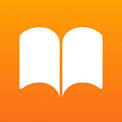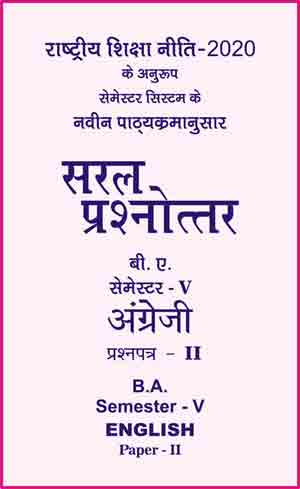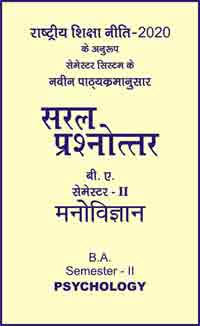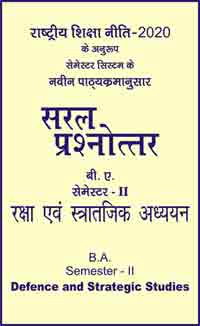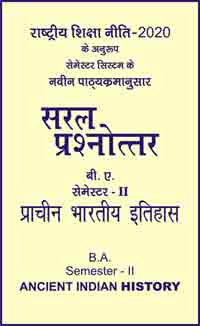|
बी ए - एम ए >> बीए सेमेस्टर-5 पेपर-2 अंग्रेजी बीए सेमेस्टर-5 पेपर-2 अंग्रेजीसरल प्रश्नोत्तर समूह
|
5 पाठक हैं |
|||||||
बीए सेमेस्टर-5 पेपर-2 अंग्रेजी - सरल प्रश्नोत्तर
Question- Define junk fiction. Explain its characteristics and types of junk fiction.
Or
What is the purpose of junk fiction?
Answer-
Junk fiction or Genre fiction is also known as (popular fiction, vernacular fiction, category fiction, paperback fiction, etc.). Generally Genre is known as the category of literature like mystery, suspense or horror. Each genre has its own conventions. Romance, for instance, deals with romantic love between two people and often ends positively. Generally, genre fiction gives value on entertainment and resultantly becomes more popular with mass audiences.
It stands "for fictional works (novels, short stories) written with the intent of fitting into a specific literary genre in order to appeal to readers and fans already familiar with that genre.
Genre fiction is also used interchangeably with the term popular fiction. People also consider it a light fiction as it does not deal with the themes as seriously or intellectually as other types of fiction usually deal.
Robert McKee who is an American 'Screenwriting teacher, defines genre conventions as the "specific settings, roles, events, and values that define individual genres and their subgenres." Such are implicit usually. But sometimes they are made into explicit requirements by publishers of fiction as a guide to authors seeking publication.
Webster's Dictionary defines "genre" as "a kind; sort; type: said of works of literature, art, etc." So in this context we can say in general, "genre fiction is all nonliterary work of fiction that includes the categories of mystery, science fiction, fantasy, romance, western, and horror."
Purpose of Junk Fiction
The primary purpose of Junk fiction is entertainment. However, as David Mamet points out in his essay, "Many works now considered great literature were originally genre novels." A work of genre or junk fiction can also be literary and serious. Jane Austen, for example, wrote literary romances, like Pride and Prejudice. Mamet goes so far as to open his essay with the line, "For the past thirty years the greatest, novelists writing in English have been genre writers." Popular fiction is focused more on accessibility to a wide audience and so is 'driven more by humor, exciting storylines and colorful characters.
Famous modern examples of popular Junk fiction would be the Harry Potter series, thriller novels of James Hadley Chase and the books of Tom Clancy and Robert Ludlum.
The purpose of popular Junk fiction is to appeal to the general public. Such books are 'marketed toward the interests of the public. The content of such fiction changes with the interests and desires of the public.
"Writers of popular/Junk fiction who are serious about being published might have to make sure that their writing conforms to the guidelines of publishers who develop their guidelines based on what the general public will buy."
Like junk food, the Junk fiction is succulent and temporarily entertaining. In the paucity of authoritative seriousness the impressions of junk fiction are not sublime and long.
Development of Junk Fiction
Popular or Junk commercial fiction came to light in the nineteenth century, with serialized novels which were also called sensational penny dreadfuls or Penny Bloods in Britain, or Dime Novels in America. Presently Such Junk fiction or popular fiction is a multi-million dollar industry giving pleasure to many. It is also a field of growing interest for scholars and students of literature. Few scholars believe that Science fiction began with Jules Verne and then H. G. Wells. Horror stories and mystery stories can both be traced in large measure to Edgar Allan Poe and a few others.
The Pulp fiction was also known as Junk fiction later. Such fictional works were called as pulps because they were printed on cheap, highly acidic paper, grew out of the dime novel industry of the nineteenth century.' Marilyn Michaud says, "The introduction of mass elementary education in the 1870s greatly increased literacy rates resulting in a desire for literary works that would appeal to all ages and classes. As literacy and consumerism grew, books and magazines became commodities accessible to all income levels. It was out of these significant cultural changes that popular or "pulp fiction emerged." In those days pulp fiction was available at five to twenty-five percents per issue and often sold at news stands and drugstores. Until the mid-1950s, pulp fiction was the literature of choice for the reading public, before it was supplanted by comic books and paperbacks. Few authors claimed the pulps as the predecessors to today's paperback books.
The period 1900-1910 was fertile for the development of Pulp or junk fiction because in this span some periodicals appeared which eventually took the form of pulp magazines of the early 20th century.
Types of Junk or Genre Fiction
There are many types of genre or junk fiction. Some of the main genres as they are used in contemporary publishing are:
1. Action 2. Adventure 3. Crime 4. Detective 5. Science 6. Romance 7. Horror - 8. Mystery 9. Western 10. Fantasy 11.Inspirational
Characteristics of Junk Fiction
Following are few major characteristics of Junk Fiction:
Cheap Price and entertaining stuff.
Published mostly in paperback edition.
The plot of popular/junk fiction is well-defined and interesting. It is full of complications and conflicts so that the interest of the reader may not be lost till the end. For example the novels of J.K. Rowling are entertaining till the last page..
However such plots commonly lack a sustained plot, worked out with close regard to cause and effect. Such plots also lack deep study of character and the intellectual analysis of such varied problems as occupy the fiction of the present age.
The conflicts in popular fiction, unlike the literary fiction, are either resolved totally or at least wound down toward a resolution by the end.
Popular/junk fiction tends to have more of a clearly defined resolution of conflict by the end of the story.
Such fiction refers to mass so it remains popular with wider audiences.
Junk fiction represents an instinctive and traditional, philosophy of life and does not soar the higher plane of philosophy.
Such fiction mirrors our contemporary living chiefly.
No dealing with serious issues of life rather the object of entertainment is priority in junk or genre fiction.
Examples of Junk Fiction
Romance novles of Daniells Steel like To Love Again, Remembrance, Loving, or Barbara Taylor Bradford's A Woman of Substance or Nora Roberts' Montana Sky are good examples of Junk fiction.
John Grishan's legal thriller novels like The Firm, The Chamber, The Client, A Painted House, The Pelican Brief and Skipping Christmas, can also be categorized into junk novels. Mary Higgins Clarke's suspense novels like Where Are the Children? and A Cry in the Night and Sue Taylor Granfton's alphabet series like "A" Is for Alibi (1982), "B" Is for Burglar (1985), or "C" Is for Corpse (1986) fall also into the category of junk.
Stephen Edwin King's horror novels like Carrie, The Shining, The Stand, It, and the Dark Tower arew junk novels. Besides, novels of Dean Koontz, Irving Wallace, Jackie Collins, Jacqueline Susann (the author of Valley of the Dolls). Dee Brown, Robert Ludam, James Patterson Tom Clancy and Clive Cussler are good instances of junk fiction.
Very recently the books of authors like Dan Brown (the author of The Da Vinci Code). Ken Follet (the author of World Without End) or Ayn Rand (The Fountainhead and Atlas Shrugged) are also genre fiction. In Hindi, the novels of Gulshan Nanda, Ved Prakash Sharma are also junk novels.
|
|||||
- Question- Discuss in detail the development of English novel from the eighteenth century to the Modern Age.
- Question- What do you understand by Novel? What are the elements which are to considered in plot construction.
- Question- Write a note on characterization of a novel. How much is it important for development of a novel?
- Question- Write a short note on narrative technique of a novel.
- Question- Write a note on the elements of a short story.
- Question- Write a note on Fielding's plot construction.
- Question- Write a note on Fielding's characterisation.
- Question- Define plot. What are the qualities of an ideal plot ?
- Question- Write a short note on the plot construction of a novel.
- Question- What is the difference between Flat Character and Round Character?
- Question- Write a short note on the characterization of a novel.
- Question- Write a short note on narrative technique of a novel.
- Question- What is a short story? What is the difference between a short story and a novel?
- Question- What is a picaresque novel? Who are the main exponents of the picaresque novel?
- Question- What is a historical novel? What is the difference between history and a historical novel? Name a few historical novelists and their creation.
- Question- What do you know about the Gothic novel?
- Question- Write a note on Epistolary novel.
- Question- Write a note on the Regional novel.
- Question- Point out the chief characteristics of the Picaresque novel.
- Question- Point out the chief characteristics of the historical novel.
- Question- Write an essay on Sir Walter Scott's contribution to historical novel.
- Question- Point out the chief characteristics of Gothic novel.
- Question- Point out the chief characteristics of the Regional novel.
- Question- What is a regional novel? Name a few novelists of this genre and their novels.
- Question- What is a Picaresque novel?
- Question- What do you know about Historical novel?
- Question- What do you know about Gothic novel?
- Question- Examine the merits of Sir Walter Scott as a Historical novelist.
- Question- What do you mean by domestic novel?
- Question- What do you mean by the Stream of consciousness? Who. coined the term?
- Question- What is a Epistolary novel?
- Question- What do you know about the Regional novel?
- Question- Trends in 20th and 21st Century Fiction Discuss as a sub-genre of crime fiction and mystery.
- Question- Define utopian fiction. Discuss its history and origin.
- Question- What is campus novel? Explain its history and development.
- Question- Write a note on Detective novel.
- Question- Write a note on Science fictions.
- Question- Write a note on Meta fiction.
- Question- Define mythology. Explain the rise of mythological fiction in India.
- Question- What is space fiction? Discuss its characteristics and example.
- Question- Define chick lit. Discuss its characteristics and example.
- Question- Define junk fiction. Explain its characteristics and types of junk fiction.
- Question- Write a short note on detective novel.
- Question- Write short note on Science fiction.
- Question- What is Meta fiction?
- Question- What is Science Fiction?
- Question- What is utopian fiction?
- Question- Why are campus novels important? What kind of characters are in campus novels?
- Question- What is dystopian fiction?
- Question- Discuss feminism in mythological fiction.
- Question- Why are campus novels important? What kind of characters are in campus novels?
- Question- What is chic lit fiction?
- Question- Write a note on the life and works of Charles Dickens.
- Question- Write a note on Charles Dickens as a novelist.
- Question- Write a note on the development of English novel up to Dickens.
- Question- Write a note on Dicken's social criticism. What was Dickens' attitude toward various social evils of the day?
- Question- Describe Dickens as a representative of his age.
- Question- Write a note on Dickens as a social reformer.
- Question- Write a note on the social background of Dickens.
- Question- Write a note on Dickens's contribution to English novel.
- Question- Discuss symbolism as a structural elements in A Tale of two cities.
- Question- Discuss Dickens's art of characterization in the novel "A Tale of Two Cities".
- Question- What is meant by criticism of life? What is the 'vision of life"? Point out the criticism and vision of life in A Tale of Two Cities.
- Question- Write a note on the blend of realism and idealism in the novels of Dickens.
- Question- "Dickens' characters are both types and individuals.” Discuss.
- Question- Write a note on Dickens as a satirist.
- Question- What is the significance of the name "Jacques" in A Tale of Two Cities?
- Question- In Book 2, Chapter 21 of A Tale of Two Cities, what is happening in France that upsets Mr. Jarvis Lorry?
- Question- Write the life of Thomas Hardy and about his career.
- Question- What are the three phases of Hardy's writing? What were the issues he dealt with in those three phases?
- Question- Write short notes on the major characters of the novel, and show how Hardy develops these characters in the course of the novel.
- Question- Who is the heroine of 'Far From the Madding Crowd"? How doy o you justify her position as the heroine?
- Question- Explain the tragic vision of Hardy in Far From the Mad ding Crowd.
- Question- Why does Bathsheba reject Gabriel's proposal at the start of the novel?
- Question- How is sexual desire portrayed in the novel?
- Question- How was Oak's life saved by Bathsheba?
- Question- How was Oak completely ruined?
- Question- Describe the feast after sheep-shearing.
- Question- How are Oak and Bathsheba ultimately a happy couple?
- Question- Discuss Jane Austen as a realist.
- Question- Point out Jane Austen's contribution to the English novel.
- Question- Write a note on characterisation of Jane Austen with special reference to 'Pride and Prejudice'.
- Question- Is there artistic detachment in Jane Austen ? Write a brief note in support to your view with illustrations.
- Question- Sketch the character of Fitzwilliam Darcy.
- Question- Sketch the character of George Wickham.
- Question- Do you agree with the view that the novel 'Pride and Prejudice' revolves around two themes of 'Pride and Prejudice'? Give reasons for your answer?
- Question- Write an essay on the sequence of events in 'Pride and Prejudice'?
- Question- Write a note on Life Sketch of George Eliot Life Sketch of George Eliot
- Question- Discuss the humour elements in George Eliot's The Mill on the Floss.
- Question- Critically examine the artistic and the philosophic dimensions of the ending of The Mill on the Floss in the light of the view of the individual and society presented in the novel.
- Question- Compare and contrast Maggie's love for Philip, Stephen, and Tom.
- Question- Describe the thematic import of Maggie's decision to relinquish Stephen.
- Question- Compare and contrast Tom and Maggie. How much are their respective successes and failures a function of gender and how much a function of their distinct characteristics?
- Question- Compare and contrast Tom and Mr. Tulliver. Why does Tom succeed where Mr. Tulliver failed?
- Question- Write a note on life kketch of Toni Morrison.
- Question- Discuss the narrative strategies used by the writer in The Bluest Eye.
- Question- Discuss the narrative structure of the novel. Why might Morrison have chosen to present the events in a non- chronological way?
- Question- What does the title of The Bluest Eye mean?
- Question- How are Pecola Breedlove and Maureen Peal foils to one another?
- Question- The Bluest Eye uses multiple narrators, including Claudia as a child, Claudia as an adult, and an omniscient narrator. Which narrative point of view doyou think is most central to the novel and why?
- Question- Who do you think is the most sympathetic character in the novel and why?
- Question- The Bluest Eye is a novel about racism, and yet there are relatively few instances of the direct oppression of black people by white people in the book. Explain how racism functions in the story.
- Question- Write a note on Life Sketch of The Harper Lee.
- Question- Analyze the childhood world of Jem, Scout, and Dill and their relationship with Boo Radley in Part One.
- Question- What is Atticus's relationship to the rest of Maycomb? What is his role in the community?
- Question- Discuss the role of family in To Kill a Mockingbird, paying close attention to Aunt Alexandra.
- Question- Discuss the author's descriptions of Maycomb. What is the town's role in the novel? Analyze the author's treatment of Boo Radley. What is his role in the novel?
- Question- Discuss Atticus's parenting style. What is his relationship to his children like? How does he seek to instill conscience in them?
- Question- Identify Atticus Finch, Jean Louise (Scout) Finch, Jem Finch, Maycomb, Calpurnia, Charles Baker (Dill) Harris, The Radley Place, Stephanie Crawford, Arthur (Boo) Radley, Miss Caroline Fisher, Walter Cunningham, and Burris Ewell.
- Question- Why did Mr. Cunningham's mob leave?
- Question- In Chapter 2 of To Kill a Mockingbird what does Miss Caroline, Scout's first-grade teacher, represent?
- Question- In Chapter 6 of To Kill a Mockingbird why is Jem is determined to retrieve his pants from the fence despite the danger of meeting up with Nathan Radley?
- Question- What is the significance of the title To Kill a Mockingbird according to Atticus's reasoning in Chapter 10?
- Question - Comment upon the role of the lions in The Old Man And The Sea.
- Question- Comment upon the symbolic role played by Di Maggio in the novel "The Old Man And The Sea'...
- Question- Comment upon the arm-wrestling episode in the novel 'The Old Man and The Sea'.
- Question- Comment upon the marlin separating episode in the novel "The Old Man and The Sea".
- Question- Write a note on the major themes of the novel The Old Man and The Sea'.
- Question- Write a brief note on The Old Man And The Sea' as a tragedy.
- Question- Which claims your attention more in The Old Man And The Sea' its narrative or allegory?
- Question- The hero of the novel "The Old Man And The Sea' is really a Christfigure. Comment.
- Question- Write a brief note on Hemingway hero or the autobiographical hero.
- Question- In the fight of the old man against the giant fish what we see is a "battle of attrition". Comment.
- Question- Write a note on Life Sketh of John Ernst Steinbeck.
- Question- Analyze Tom Joad's growth throughout the novel. Despite the fact that Tom is not a young boy, does the novel have the characteristics of a bildungsroman, or coming-of-age story?
- Question- Discuss the development of Tom Joad as a character. How does he grow throughout the book? What effects do Jim Casy's imprisonment and death have on his development?
- Question-What themes related to family are in The Grapes of Wrath?
- Question- How does the erosion described in Chapter 1 of The Grapes of Wrath relate to the Bank monster described in Chapter 5?
- Question- How do the roles of Ma and Pa differ in the Joad family in The Grapes of Wrath?
- Question- In The Grapes of Wrath how is the Gila monster described in Chapter 13 comparable the Bank monster?
- Question- What biblical allusions does John Steinbeck include in The Grapes of Wrath and how does he use them?
- Question- How do the roles of Ma Joad and Pa Joad within the family change in The Grapes of Wrath?
- Question- In The Grapes of Wrath, why does the Joad family deteriorate after the Joads leave Oklahoma?
- Question- Write a note on Life Sketch of Aravind Adiga
- Question- Discuss plot of the novel The White Tiger.
- Question- Explain literary analysis of The White Tiger by Aravind Adiga.
- Question- Critical analysis of the novel The White Tiger written by Aravind Adiga.
- Question- What is Balram's attitude toward religion? How does this develop throughout the novel?
- Question- How does this portrayal of India differ from more typical literary depictions of India?
- Question- Why does Balram choose to address his narrative to the Premier of China? How would the story have been different without this framing device?
- Question- Discuss Balram's many names throughout the novel, and how each one represents an aspect of him.
- Question- What does Balram's experience in Bangalore reveal about the Indian economy in an increasingly globalized world?
- Question- Attempt critical analysis of the novel 'Dalits, Dynasty and She' by Sanjay Chitranshi.
- Question- Explain the plot of the novel 'Dalits, Dynasty and She 'written by Sanjay Chitranshi.
- Question- Discuss the Novel 'Dalits, Dynasty and She' by Sanjay Chitranshi.
- Question- Who was Shanti Devi?
- Question- Write a' character sketch of Ram Chandra.
- Question- Write a note on Life Sketch of Sudha Murty.
- Question- What are the major themes of the novel "Dollar Bahu"?
- Question- Discuss how the notion of self sacrifice is exclusively attributed to a particular gender in Indian society. How they thrive through the difficult situation in life when they are implanted to a new atmosphere.
- Question- Write a note on the title "Dollar Bahu?".
- Question- Write a note on the end of the novel "Dollar Bahu".
- Question- Discuss the central theme of Dollar Bahu.





